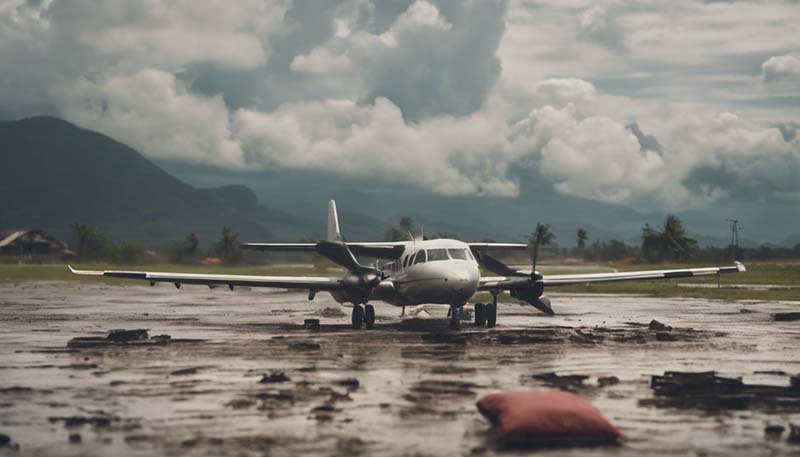Disasters, both natural and man-made, have become increasingly common and devastating in recent years. With the growing frequency and severity of these events, the need for effective disaster relief and humanitarian assistance efforts has never been greater. One of the most critical components of these efforts is the use of aviation, which plays a vital role in providing rapid and efficient support to affected areas. This article explores the various ways in which aviation contributes to disaster relief and humanitarian assistance, highlighting its importance in saving lives and alleviating suffering.
Introduction
Natural disasters, such as earthquakes, hurricanes, floods, and wildfires, have long posed significant challenges to communities and nations around the world. In addition, conflicts and other man-made crises have led to widespread displacement, suffering, and loss of life. In response to these challenges, disaster relief and humanitarian assistance efforts have been developed to provide aid and support to affected populations. A critical component of these efforts is the use of aviation, which offers a range of benefits that can significantly improve the effectiveness of relief operations.
Advertisement
Transportation of Supplies and Personnel
One of the primary roles of aviation in disaster relief and humanitarian assistance is the transportation of essential supplies and personnel. In the aftermath of a disaster, roads and other infrastructure may be damaged or destroyed, making it difficult or impossible for ground transportation to reach affected areas. Aviation provides a fast and efficient alternative, allowing for the rapid delivery of food, water, medical supplies, and other necessities to those in need.
Furthermore, aviation enables the deployment of specialized personnel, such as search and rescue teams, medical staff, and engineers, who can provide critical expertise and support during relief operations. By transporting these individuals and resources quickly and directly to the affected areas, aviation plays a crucial role in ensuring that help arrives as soon as possible.
Search and Rescue Operations
Search and rescue (SAR) efforts are a vital aspect of disaster relief and humanitarian assistance, as they aim to locate and rescue individuals who have been separated from their families or trapped in dangerous situations. Aviation is an indispensable tool in these efforts, as it allows for the rapid and extensive coverage of large areas, increasing the chances of locating missing persons and providing assistance.
Helicopters and fixed-wing aircraft are often utilized in SAR operations, as they can access remote or difficult-to-reach areas and provide a bird's-eye view of the search area. Additionally, modern aircraft are equipped with advanced technology, such as thermal imaging cameras and satellite communication systems, which can further enhance the effectiveness of search and rescue efforts.
Aerial Surveillance and Assessment
Another important role of aviation in disaster relief and humanitarian assistance is aerial surveillance and assessment. In the aftermath of a disaster, it is crucial to quickly and accurately assess the extent of the damage and identify areas in need of the most immediate assistance. Aviation allows for the collection of valuable information and imagery, which can be used to inform decision-making and prioritize resources.
Aerial surveys can be conducted using a variety of platforms, including manned aircraft, drones, and satellites. These surveys provide high-resolution images and data that can be used to create detailed maps and models of the affected areas, helping to guide relief efforts and ensure that resources are allocated effectively.
Communication and Coordination
Effective communication and coordination are essential components of any disaster relief and humanitarian assistance effort. Aviation plays a critical role in facilitating these processes by providing a means of communication and transportation for relief personnel and organizations.

Aircraft can be equipped with advanced communication systems, allowing them to serve as mobile command centers and relay information between ground teams, other aircraft, and remote operations centers. This enables a more streamlined and efficient response, as decisions can be made quickly and information can be shared in real-time.
Long-Term Support and Recovery
While the initial response to a disaster is crucial, long-term support and recovery efforts are equally important in ensuring that affected communities can rebuild and recover from the devastation. Aviation continues to play a vital role in these efforts, as it can provide ongoing transportation of personnel, supplies, and resources, as well as support for reconstruction and rebuilding projects.
In addition, aviation can be used to transport humanitarian aid and development workers who are focused on addressing the root causes of vulnerability and improving the resilience of affected communities. This can include efforts to improve infrastructure, provide education and training, and support sustainable development initiatives.
Challenges and Limitations
Despite the many benefits of using aviation in disaster relief and humanitarian assistance efforts, there are also several challenges and limitations that must be considered. One of the primary challenges is the cost of deploying and operating aircraft, which can be a significant burden for organizations with limited resources. In addition, the use of aviation may be limited by factors such as weather conditions, airspace restrictions, and the availability of suitable landing sites.
Another challenge is the potential environmental impact of aviation, as the burning of aviation fuel contributes to greenhouse gas emissions and climate change. This is an important consideration for organizations that are committed to sustainable development and reducing their carbon footprint. To address these challenges, it is essential to invest in research and development of more efficient and environmentally friendly aviation technologies and to explore alternative methods of transportation where appropriate.
Conclusion
Aviation plays a vital role in disaster relief and humanitarian assistance efforts, providing rapid and efficient support to affected areas and populations. From the transportation of supplies and personnel to search and rescue operations, aerial surveillance and assessment, and long-term recovery efforts, aviation is an indispensable tool in the fight against disasters and crises. By understanding the benefits and challenges of using aviation in these contexts, organizations can better leverage this resource to save lives and alleviate suffering.